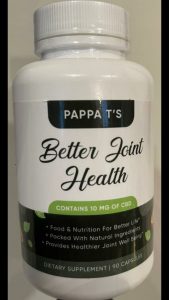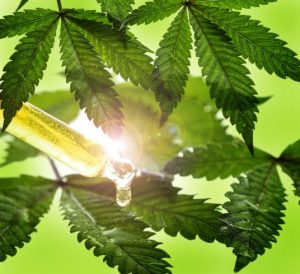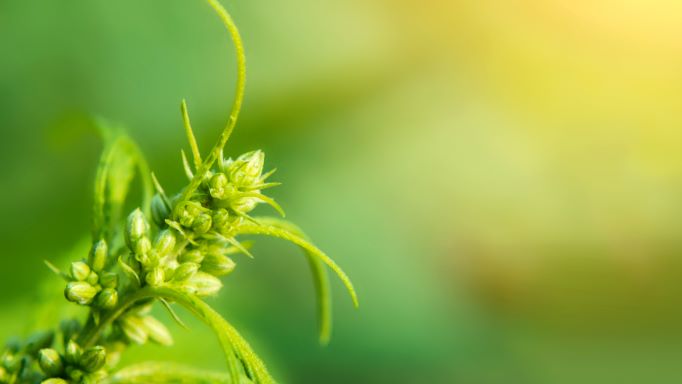Types of CBD
Many people in the medical world are learning about the many benefits of CBD. People from all over the world are studying all the different ways in which CBD can help people with different ailments and conditions. There are three general types of CBD products being made.
These are Broad Spectrum, Full Spectrum, and Isolates. Each type has a wide variety of different types of CBD available for consumers to purchase. They have various benefits and are used for different reasons. Some people use them for their healing properties, some people use them for recreational purposes, and some people use them for their soothing effects. The three main categories of CBD are referred to below.
Broad Spectrum CBD
The first category is referred to as Broad Spectrum CBD. This is the type of CBD oil that comes from the entire spectrum of  CBD oils that are grown and distilled. With this type of oil, it is best to avoid the full-spectrum oils because the extra oil that comes with them may contain too much CBD. The best thing to do is to go with one of the other two types of oils like Broad or Isolates. When choosing the best CBD product, you will want to choose one of the three below.
CBD oils that are grown and distilled. With this type of oil, it is best to avoid the full-spectrum oils because the extra oil that comes with them may contain too much CBD. The best thing to do is to go with one of the other two types of oils like Broad or Isolates. When choosing the best CBD product, you will want to choose one of the three below.
Full-spectrum CBD
The next category is called Full-spectrum CBD. The best thing about this type of oil is that the CBD is not extracted at a very high temperature. This allows the CBD to be absorbed more deeply into the body. You should make sure that if you are purchasing this type of oil that you go with a top-grade product. Some of the best products are from the United States, Europe, New Zealand, and Canada.
Low-Density CBD or LDC
The third category that is worth mentioning is called Low-Density CBD or LDC. These types of oils are made with a lower dosage than the actual cannabidiol. The reason for this is because there is not a need to extract more CBD from the plants. Since the amount is reduced, you will get a lower dosage of the beneficial cannabinoids in the plant.
There are also different methods for obtaining these products. For example, you can purchase these in different forms. One option is to purchase in a sample amount, then pay for the full amount when it is ready. The other option is to purchase the full amount, but then you will have to wait for the product to arrive through different methods like ground shipping, and a two-day free shipping option available if you purchase over a certain amount of dollars.
Once you have chosen your delivery method, you will be able to get your hands on a reliable type of CBD oil. The good thing about buying CBD oil through a third-party lab is that they can provide you with a detailed overview of the different types of CBD oil to guide you in picking the right type of product. You will also be able to compare the different brands based on the dosage, extraction method, and ingredients used. It will also help you choose between different brands based on their overall prices.
There are many benefits when using third-party lab testing. Aside from being able to get detailed descriptions of each of the different types of CBD oil, you can also look at the lab results side by side. This will give you a better understanding of the effects of each specific type of oil has to offer. It will also allow you to see how different types of oil compare to one another depending on dosage, extraction method, and other important factors. You now have everything you need to choose which type of CBD oil is best for you.
What Are The Different Grades Of CBD?
There are two primary sources for CBD, namely, the oil of the cannabis plant and oil derived from the seeds of the cannabis plant. When these two products are combined, they become CBD. But CBD is not the same as THC, which is the main psychoactive ingredient in cannabis. When CBD comes into contact with THC, it produces what is known as a CBD THC interaction, which has been discovered to be quite dangerous and even deadly. It has been found that by ingesting even trace amounts of the combination of CBD and THC, the body becomes intoxicated with the false illusion of addiction to the cannabis plant.
So, what are the different grades of CBD?
There is no definitive answer to the question; what are the different grades of CBD. Some people claim that there is only one CBD strain, but with more research being done on the subject it has been discovered that there are actually six different types of CBD. The strains are described as light, medium, dark, regular, reggae, and therapeutic. It is interesting to note that the term CBD is not regulated in the United States, nor are there any standards for the production or quality of CBD.
different types of CBD. The strains are described as light, medium, dark, regular, reggae, and therapeutic. It is interesting to note that the term CBD is not regulated in the United States, nor are there any standards for the production or quality of CBD.
How Are The Different Strains Different?
The plants are grown in very similar conditions, utilizing the same growing practices. All the strains differ slightly concerning flower height, plant density, air circulation, and soil fertility. What are the differences? The plants that contain the highest amounts of CBD are said to have the least harmful effects on animals. The effects on humans do not vary according to the strain, but all strains differ in the amount of THC present in the plant.
What are the most popular strains?
Strain number one contains the least amount of CBD of all the strains. It is referred to as standard and is the product that most consumers choose to use. The second most popular strain is known as delta-9 tetrahydrocannons, or CBD for short, and it contains twice the amount of THC as any of the other strains.
Why are the two types of CBD different?
There is no definite reason as to why CBD and THC have different levels of CBD. Some experts believe that CBD is less “active” than THC. Since CBD has no psychoactive properties, it is considered much safer than THC, which has been proven to have a high level of potency in some studies.
When are the differences noticed?
Some differences are noticed right away, such as the fact that delta-9 tetrahydrocannons and CBD tend to have a smoother taste. However, other differences may be more subtle, and the consumer may not be able to determine the difference until they have tried both strains.
How can you tell if CBD is safer than THC?
Unlike THC, which has a psychoactive ingredient, CBD doesn’t have a substance that may affect you negatively if it’s ingested. Therefore, it can be considered relatively safe, especially when compared to other, more highly potent strains of cannabis.
In addition to delta-9 tetrahydrocannons, some strains of cannabis also contain other Cannabinoids. For example, Cookies and Pop-pipes contain Cannabinol, which is similar to CBD. Other common Cannabinoids include Canniganrol, which is often included in marijuana strains; and Hemp oil, which may be included in oils produced from hemp. It’s important to be aware of the different grades of CBD when purchasing a product, to avoid consuming more harmful chemicals than are necessary.
The two most popular strains of CBD are THC and CBD, although it is possible to find other strains, as well. Each strain of CBD has a different effect on the body, so it is important to be sure that the strains you choose are exactly what you need.
What are the different levels of CBD and THC?
Although CBD does not contain as much THC as THC, it still produces a similar high when used in certain infused products. For example, Cookies and Pot-pipes often contain less CBD than cannabis, because CBD doesn’t get absorbed through the skin or lungs. This means that CBD is generally less expensive than THC, making it a more affordable choice for consumers who are looking for a more natural alternative.
You will find that there are two general categories, although there may be other terms you come across when researching CBD online. The two general types are THC and CBD. To be certain that what you buy is a pure CBD product, it is important to ensure that you check the CBD makeup percentage in any products you are considering. While there are many products on the market containing both THC and CBD, there are more specific strains for each, which is why it is important to be aware of what you are buying when you are considering what are the different grades of CBD.

